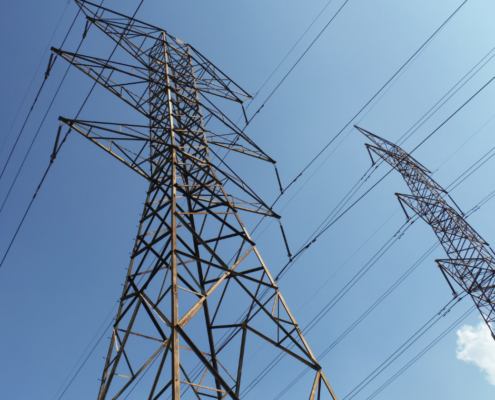Last Updated on August 24, 2022 by Mary Pressler
Outrageous Electric Bill? The Culprit is Natural Gas
Leonardo D for Quick Electricity
Natural gas is one of the main energy sources in the US. Homes and businesses use it directly for space and water heating, and indirectly when consuming electricity – natural gas accounted for 38.3% of generation in 2021, according to the Energy Information Administration. However, this also means all sectors suffer an increase in their energy costs when gas is expensive.
The high price of natural gas as of May 2022 is the result of several factors. Supply chains have been constrained, US inflation rates are at a 40-year high, and the prices of many products and services are on the rise. Natural gas prices in particular have been greatly affected by the war between Russia and Ukraine:
- Russia is a major natural gas producer, and Europe depends heavily on Russian gas delivered via pipeline.
- Since the conflict started, European countries are looking for other sources of natural gas, to reduce their dependence on the Russian supply.
- The US has increased liquefied natural gas (LNG) shipments headed for Europe.
There is a high demand for natural gas, precisely when supply is constrained by the Russia-Ukraine conflict, and the result is high prices.
Natural gas futures have been trading above $7 per million BTU in recent weeks, as you can see in MarketWatch, reaching prices between $8 and $9 per MMBTU during the first week of May. For comparison, prices were below $3 per MMBTU one year ago, which indicates a 12-month increase of over 130%. Natural gas futures are at a 14-year high, trading at prices not seen since September 2008.
The fossil fuel industry can easily ramp up production when oil prices are high, and this helps stabilize the price (supply and demand can balance). However, increasing gas production in response to high prices is not so simple, and prices keep rising due to the gap between supply and demand.
- Natural gas production capacity is often locked up by long-term contracts, which often require annual increases in supply.
- Building new pipelines is slow and expensive, and LNG shipments cannot match the delivery rate of pipelines. Globally, only 13% of natural gas is delivered by ship.
We often associate natural gas with heating appliances, which tend to have a higher usage during the winter. However, high gas prices affect our energy costs all year long. Remember that homes and businesses are using their air conditioners during summer, and peaks in electricity consumption are normally covered by gas-fired power plants. Wind turbines and solar farms can help reduce energy prices, but they cannot be used on demand – only a dispatchable source like natural gas can respond to sudden peaks in consumption across the grid.
Expensive Natural Gas = Expensive Electricity
Electricity prices were up by 8% between January 2021 and 2022, according to a New York Times article. By February, electricity prices were already approaching the rates expected for summer, which are generally the highest in the year. This means even higher prices can be expected when the hottest months arrive.
- The National Weather Service is forecasting above-average temperatures between July and September 2022, which means air conditioning will drive up electricity consumption.
- Considering the combination of high kilowatt-hour prices and high demand, now is an excellent time to invest in energy efficiency measures and solar power systems.
According to the US EIA, the average electricity price could exceed 15 cents/kWh within a year, up from the February 2022 value of 13.83 cents/kWh (latest data as of May 2022). However, this also means that savings achieved by energy efficient technologies like LED lighting and air conditioners with a high SEER rating also increase. The same can be said of solar generation: when kWh prices increase, the value of solar electricity also increases.
Mitigating the High Price of Gas and Electricity
As mentioned above, rising gas and electricity prices create an even greater incentive for energy efficiency measures and solar panels. You can start with simple upgrades that have low costs and quick payback periods, and the following are some examples:
- Upgrading to LED bulbs, which have a lower power consumption and longer service life than older lamp types
- Caulking and weatherstripping, which are simple weatherization measures that reduce your heating and air conditioning costs
- Using a smart thermostat, which can often reduce your HVAC costs by around 10%
There are also energy upgrades that require larger investments, but they offer much higher savings in return. You can replace your heating and air conditioning equipment with newer ENERGY STAR units, which offer superior efficiency. Installing solar panels is also a viable option for many homes and businesses: high-quality panels can generate electricity for more than 25 years, with minimal maintenance requirements. If you own a commercial building, a deep energy retrofit can potentially reduce consumption by 30-50%.
According to many analysts, the price of natural gas can be expected to continue rising in the short term. Considering that nearly 40% of US electricity comes from gas, the same trend can be expected for kilowatt-hour prices. However, you have the option of fixed-rate electricity plans, where the energy price remains fixed during a specified time period. Electricity prices may seem high now, but even higher prices can be expected during summer.
Staying on a variable-rate or market-rate electricity plan is not the best option at this time. Natural gas prices are expected to continue rising, and this will also drive electricity prices higher. By switching to a fixed-rate plan, you can nail down a lower kilowatt-hour price for the summer.











Leave a Reply
Want to join the discussion?Feel free to contribute!